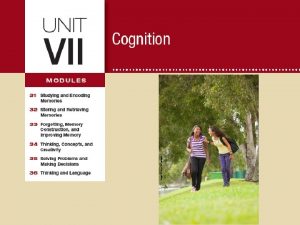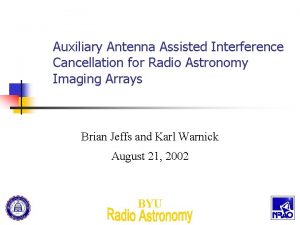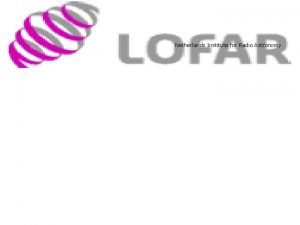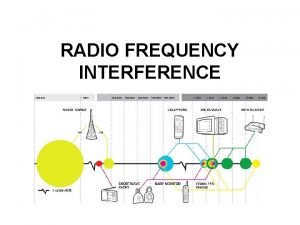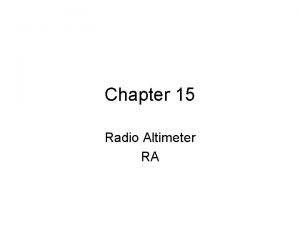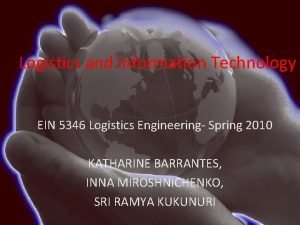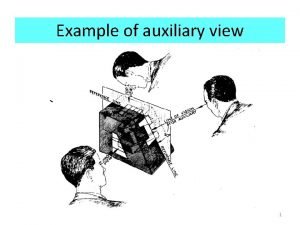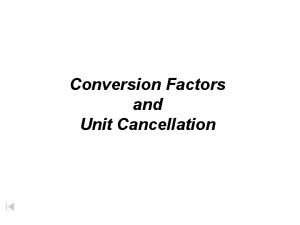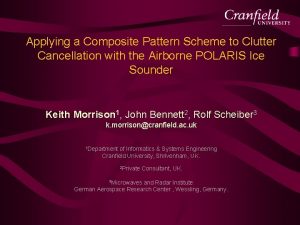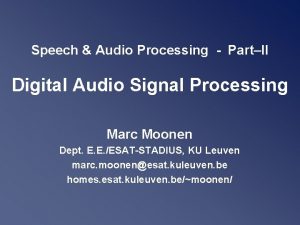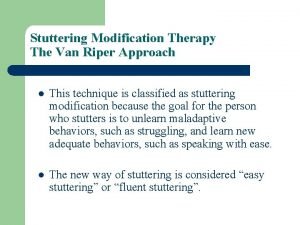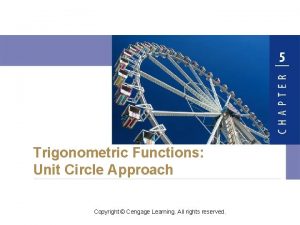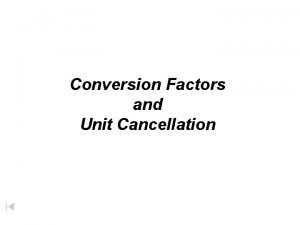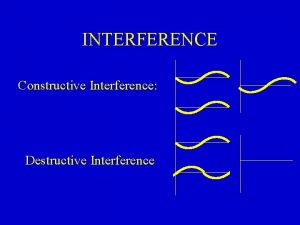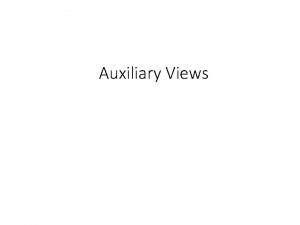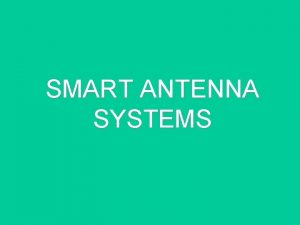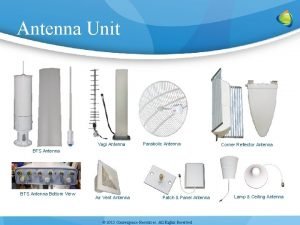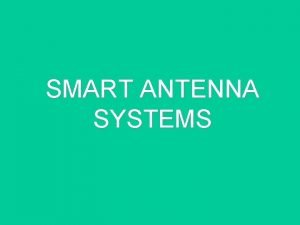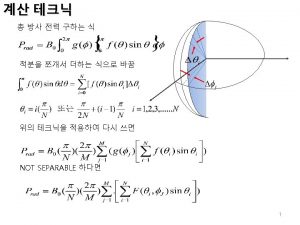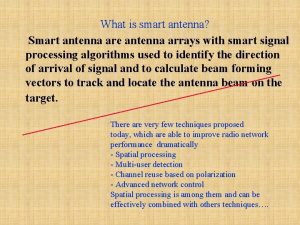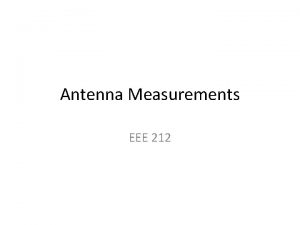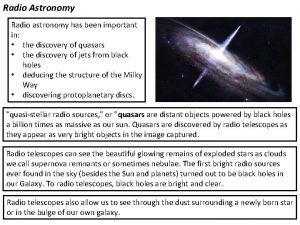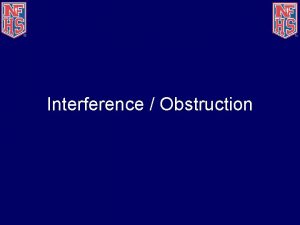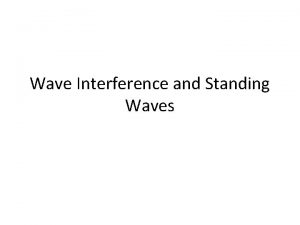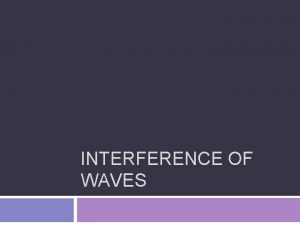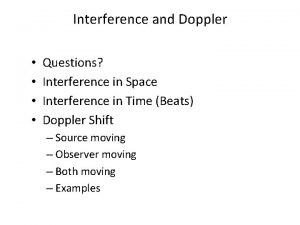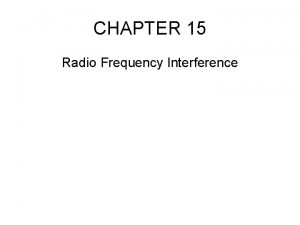Auxiliary Antenna Assisted Interference Cancellation for Radio Astronomy



![Augmented Imaging Array Structure GLONASS satellite Primary Antennas . . . x 1[n] x. Augmented Imaging Array Structure GLONASS satellite Primary Antennas . . . x 1[n] x.](https://slidetodoc.com/presentation_image/366f31244b4401bef030f1c8c0bb052b/image-4.jpg)






















- Slides: 26

Auxiliary Antenna Assisted Interference Cancellation for Radio Astronomy Imaging Arrays Brian Jeffs and Karl Warnick August 21, 2002 BYU

References 1. J. Raza, A-J Boonstra and A-J van der Veen, “Spatial Filtering of RF Interference in Radio Astronomy, ” IEEE SP Letters, vol. 9, no. 2, Feb. 2002. 2. A. Leshem, A-J van der Veen, “Radio-Astronomical Imaging in the Presence of Strong Radio Interference, ” IEEE Trans. On Information Theory, vol. 46, no. 5, Aug. 2000.

Summary n Goal is to remove strong interference component from synthesis array covariance estimate, Rs. n Satellite signals: GLONASS, Iridium n Direct path dominant interference, low rank Ri. n Adaptive array beamforming not applicable. n Subspace projection methods preserve structure of Rs. n Use of low gain auxiliary antennas in existing and new algorithms yields improved cancellation.
![Augmented Imaging Array Structure GLONASS satellite Primary Antennas x 1n x Augmented Imaging Array Structure GLONASS satellite Primary Antennas . . . x 1[n] x.](https://slidetodoc.com/presentation_image/366f31244b4401bef030f1c8c0bb052b/image-4.jpg)
Augmented Imaging Array Structure GLONASS satellite Primary Antennas . . . x 1[n] x. Mp[n] x. M[n] xa[n] x[n] Auxiliary antennas

Possible Augmented VLA Configuration n Auxiliaries are 3 m dishes, inexpensive LNAs and receiver electronics. Existing dish (approximate location shown) is used for RFI satellite tracking studies – could be used as auxiliary. Auxiliaries could be connected to unused correlator inputs (e. g. outof-service antennas).

Array Covariance Matrix is the Basis for Synthesis Imaging n n n Elements of Rs are image frequency domain samples. Earth rotation moves baselines for new Rs, more frequency samples. Interference effects must be removed from Rs directly, beamforming to place nulls is not possible since correlations from all array pairs are needed. (b) VLA frequency samples with Earth Rotation (d) VLA frequency sample snapshot

Subspace Projection Approach (Leshem & van der Veen, Raza et al) n Interference component of R spans a subspace of rank Q = number of interferers. aq is array response to qth interferer with power n . Find a projection operator orthogonal to Ri Use this in imaging. No interferer left!!

Methods of computing P n If array is calibrated and interference direction known: n If ISNR >> 0 d. B at feeds and direction unknown: n If interference moves, use short-term integration for

Problems: Bias n Projection biases signal subspace, n n n Cannot invert because P is singular. Solution (Raza et al): use smoothing over short-term integrations to build rank Now

Problems: Poor Subspace Estimates (main focus of this work) n n Signal is many d. B below noise. High gain antennas help reject interferer, but make subspace estimation hard. n Often INR 0 d. B at feed. n Gain increases SIR by 70 d. B. n n Sometimes the signal or noise is identified as the interferer, and is projected out. Poor interference subspace estimate leads to poor interference rejection from projection matrix P.

Solution to Bad Subspace Estimates: Use Auxiliary Antennas n Array consists of high gain “primaries” and low gain “auxiliaries, ” perhaps steered to interference, (1) n n Auxiliary antennas see high ISNR to guide subspace estimation for the primary array. Four different approaches for computing P have been evaluated.

1. Conventional Full Array Subspace Projection with Auxiliaries n n n Use the full array, including auxiliaries, with no distinction as to antenna type. Compute a truncated projection matrix: Significant performance improvement over using primaries only. Handles weaker interferers.

2. Array Multiple Sidelobe Canceller (AMSC) n Classical MSC beamformer: n Form MSC separately with each primary antenna: n Covariance is : (2)

Array Multiple Sidelobe Canceller (cont. ) n Neglect estimation error and signal term in auxiliaries. n Thus, our estimate is: n Low risk of signal capturing the interference subspace.

3. Auxiliary Assisted Cross Subspace Projection n Projection uses only cross correlations between primaries and auxiliaries to strongly emphasize the interferer, increase ISNR. n Use only the primaries in final estimate: n Best overall performance.

VLA in Compact Configuration and Source Geometry

VLA Simulated Examples: Scenario 1, Stationary Interferer, 1 Aux. 1612 MHz with one omni 0 d. B aux. , 200 Jy source with one GLONASS interferer.

Scenario 2: Two Stationary GLONASS Interferers, 2 Auxiliaries VLA, 1612 MHz with two 3 m aux. dishes, 200 Jy OH source with two GLONASS interferers.

Scenario 3, Two Orbiting Interferers, 2 Auxiliaries VLA, 1612 MHz with two tracking 3 m dish auxiliaries, 20 Jy OH source with two GLONASS interferers. Short-time integration and bias removal.

Conclusions n n In all cases, use of auxiliary antennas dramatically improved interference rejection. Auxiliary assisted cross subspace projection performed best with weak interferer. No jammer detection needed. AMSC has lowest covariance estimation error. Auxiliary antennas are low cost, and can be added to existing arrays with modest investment.

Scenario 1, SIR

Scenario 1 MSE

Scenario 2, SIR

Scenario 2, MSE

Scenario 3, SIR

Scenario 3, MSE
 Learning astronomy by doing astronomy
Learning astronomy by doing astronomy Learning astronomy by doing astronomy
Learning astronomy by doing astronomy Learning astronomy by doing astronomy
Learning astronomy by doing astronomy Proactive interference
Proactive interference Source amnesia
Source amnesia Auxiliary antenna
Auxiliary antenna Netherlands institute for radio astronomy
Netherlands institute for radio astronomy Radio astronomy lectures
Radio astronomy lectures Rf interference
Rf interference Iss ham radio antenna
Iss ham radio antenna Radio altimeter
Radio altimeter Radio frequency antenna
Radio frequency antenna Auxiliary front view
Auxiliary front view Awin radio
Awin radio 100 centimeters = 1 meter
100 centimeters = 1 meter Clutter cancellation
Clutter cancellation Digital audio and speech
Digital audio and speech Van riper approach to stuttering
Van riper approach to stuttering Absa mortgage payment holiday
Absa mortgage payment holiday Visitor welcome adani mundra
Visitor welcome adani mundra Cancellation property trig
Cancellation property trig Pgl cancellation policy
Pgl cancellation policy Balmer lawrie defence travel system
Balmer lawrie defence travel system Flight cancellation predictor
Flight cancellation predictor Gst suo moto cancellation revoke
Gst suo moto cancellation revoke Explorica tours
Explorica tours Unit cancellation
Unit cancellation




